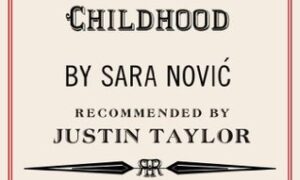 The Gallows Curse by Karen Maitland
The Gallows Curse by Karen Maitland
My rating: 4/5 cats




this is probably the best book i have ever read that is narrated entirely by a mandrake.

let’s take a moment to celebrate the mandrake, shall we? a humanlike plant brought to life by the spilled semen of hanged men which screams when it is pulled from the ground, but will continue to live and grant you magical abilities if you treat it right? coolest thing ever, and a childhood fascination of mine – i always wanted one for a pet, but noooooo, we had to have a dog. damn traditional family…
this book takes place during the interdict of king john in 1210, which suspended all services of the church: baptism, marriage, holy unction, last rites, because of his dispute with the pope over archbishop-appointment. which is a shitty thing to do to a medieval people whose lives were so dependent upon their religious rituals, yeah?
this interdict affects all the characters in the book, but the focus is primarily upon elena, a young villein in the service of lady anne, and rafaele/raffe, a eunuch also in lady anne’s service, who is trying to absolve the sins of his deceased friend and lady anne’s son, sir gerard.
so, elena is in love with fellow-villein athan, and would have married him if she had been able to (thanks a lot, king john…) but even without the church-sanctioned ceremony, she considers herself to be his, and they have one night of intercourse, during which she becomes pregnant. which is what god does to you when you have sex without marriage. rafaele, thinking she is a virgin and therefore cannot be harmed by the practice, tricks her into becoming a sin-eater for sir gerard, who has died unshriven in battle with some serious sins on his soul.
of course, she is not, in fact, a virgin, so bad things happen.
lots and lots of bad things.
it is way too complicated and twisty to go into in an eensy little book report,but there will be a birth, and accusations and murder and the gallows and a brothel and a dwarf and runaway priests and a liquefying body and a lion and a multiple-amputee and a werecat and a generations-old revenge plot and murder. murder. murder.
and all of this is overseen by the mandrake, cause of so much of the awful.
but the book is really very good.
the criminal justice system of medieval times was kind of horrifying, i’m sure you know. in my freshman year of undergrad, i took an anthropology course about witchcraft, which was amazing.
an aside!! when i was looking online for a picture of my professor for that course, the only one i could find was this doodle:

from this genius-of-a-concept, but not very well-maintained site:
which makes me wish i could find my notebooks from my own nyu days, because i had some fabulous prof-doodles.
also, beidelman never once wore a tie to any of my classes. just these tight-over-little-potbelly t-shirts with black cats and other witchy stuff on them, even though his lectures were 100% serious. and he always appeared hungover, but in an energetic, wild-haired way, not all sluggish and uninterested. and he wrote this book: Moral Imagination in Kaguru Modes of Thought, which i am apparently one of only two people to ever have rated on here. but it was a good book, and it was definitely my favorite class freshman year, and i got an a+. so there.
but witchcraft was such a tricky and formless crime. the acceptable proofs of guilt were not particularly compelling. basically, if you were a woman, and you had any kind of power or influence or wealth, you were probably going to be accused of witchcraft sooner or later. sorry.
As with mandrakes, those women with gifts that men cannot control, men fashion into witches and demons, that they might destroy them.
and the punishments were not all healthy new england burnings or drownings – the germans got particularly creative.
not really sure why i went off on a witchcraft tangent there, since the “serious” witch hunts in europe didn’t start until centuries later, except that this book has a lot of witchy magic in it, resulting from both the repercussions of the sin-eating ritual, the mandrake itself, and the influence of a couple of “cunning women” who are using elena for their own purposes just as rafaele used her for his. there are accusations of witchcraft, of course, but i think i might have overemphasized it in my nostalgia over dear old beidelman’s course.
i am blizzard-addled.
but the witch hunts were very a gendered phenomenon, and this book is also very focused on gender, from the powerlessness of a woman of the villein class, to raffe’s surgically removed manhood, to the sexual currency in the brothel where elena is forced into prostitution. (yeah,man, i told you it was complicated, sheesh.)
but the madame of the brothel is a phenomenal character – a dwarf with a snake-preoccupation who is super tough and calculating, but you know you are going to unearth her secret compassionate center. eventually.
No girl in this stew is a whore, my darling, unless she chooses to be one. Every woman here sells what talents she has, and that makes her an artist, a merchant of goods. She does no more or less than a scribe, a musician, or a trader in holy relics. Only a woman who lets a man take her because she is afraid of him, or of making her own way in the world, makes herself a slave and a whore. More whores have graced the noble marriage beds of Europe than ever worked in brothels.
which i kind of love, and in this context, in this situation, sex has been elevated to an art. in her brothel, at least, not so much in the elena-and-athan in the barn episode. but elena will learn.
i think this review got away from me again. sorry about that. once again, blair has beaten me to a book, and her review is leaps and bounds above mine, so go read that instead.
also, blair, if you are here View Spoiler »





